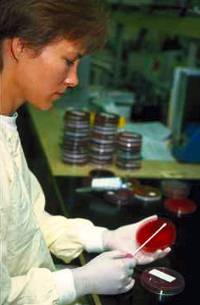18 May 1999
Scientists get sperm to do the hard work
 An international group of scientists have developed a new method of making transgenic animals that provides a better chance of the new genes being passed on for multiple generations.
An international group of scientists have developed a new method of making transgenic animals that provides a better chance of the new genes being passed on for multiple generations.
The current method of making transgenic animals (animals that carry foreign genes) involve either injecting genes directly into embryos or delivering them courtesy of a virus. However, each method has drawbacks that make its success rate low and difficult to predict.
The new method, reported in the current edition of Science involves genetically altering sperm, and then getting it to do the job of carrying the new genes into an egg. This egg then develops into a transgenic embryo.
The researchers from Osaka University, and Obihiro University of Agriculture and Veterinary Medicine in Japan, along with a team at the University of Hawaii, freeze-dried mouse sperm, which was then inserted with jellyfish DNA.
This sperm was then injected into mouse eggs, which grew into embryos that were then transferred into female mice using standard techniques.
Their studies showed up to 80 per cent of the embryos took up the new gene, which makes jellyfish glow fluorescent green.
The transgenic mice embryos were easy to see as they too glowed green when exposed to ultraviolet light.
While only one in five of the embryos survived pregnancy and expressed the gene, the 20 per cent success rate is higher than currently-used methods.
Scientists want transgenic animals for a variety of research efforts including ones aimed at producing human proteins in animals which can be used to treat human diseases, and ones that make animal organs more human-like and thus, less likely to be rejected after transplant surgery.
Ideally they want the genes to be inserted in such a way that breeding between two transgenic adults would result in as many offspring as possible also carrying the new genes.
The researchers believe their success is due to some interaction between the foreign DNA and some yet-unknown molecules in the head of the sperm.
